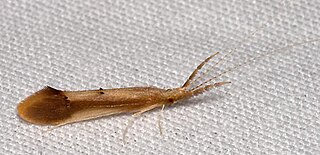
Sorghum or broomcorn is a genus of about 25 species of flowering plants in the grass family (Poaceae). Sorghum bicolor is grown as a cereal for human consumption and as animal fodder.

Loxocemus bicolor, the sole member of the monotypic family Loxocemidae and commonly known as the Mexican python, Mexican burrowing python and Mexican burrowing snake, is a species of python-like snake found in Mexico and Central America. No subspecies are currently recognized. Analyses of DNA show that Loxocemus is most closely related to the true pythons and the sunbeam snakes.

Sorghum bicolor, commonly called sorghum and also known as great millet, broomcorn, guinea corn, durra, imphee, jowar, or milo, is a species in the grass genus Sorghum cultivated for its grain. The grain is used for food for humans; the plant is used for animal feed and ethanol production. Sorghum originated in Africa, and is now cultivated widely in tropical and subtropical regions.

The bicolored hawk is a species of bird of prey in the family Accipitridae. It is found in forest, woodland, second growth, plantations, and wooded savanna in southeastern Mexico, Central America, and northern and central South America. Though generally uncommon, it is the most common species of Astur in most of its range, but it does not occur at altitudes above 2,700 metres (8,900 ft) such as the highest parts of the Andes.

Triaenodes is a genus of long-horned caddisflies in the family Leptoceridae. There are at least 170 described species in Triaenodes.

Theobroma bicolor, known commonly as the mocambo tree, jaguar tree, balamte, or pataxte, among various other common names, is a tree in the genus Theobroma, which also contains the better-known Theobroma cacao. It is found in Central and South America, including stretches of the Amazon rainforest in Brazil, Colombia, Ecuador, and Peru.
Xanthochroina bicolor is a species of false blister beetle in the family Oedemeridae. It is found in North America.

Merhynchites bicolor, the rose curculio, is a species of leaf rolling weevil in the beetle family Attelabidae. It is found in North America.
Lampria is a genus of robber flies in the family Asilidae. There are at least 20 described species in Lampria.
Strangalia bicolor, the bicolored flower longhorn, is a species of flower longhorn in the beetle family Cerambycidae. It is found in North America.
Eugonus bicolor is a species of fungus weevil in the beetle family Anthribidae. It is found in Central America and North America.
Megamelanus is a genus of delphacid planthoppers in the family Delphacidae. There is at least one described species in Megamelanus, M. bicolor.

Phoenicophanta bicolor is a species of moth in the family Noctuidae. It was first described by William Barnes and James Halliday McDunnough in 1916 and it is found in North America.
Notolomus bicolor is a species of true weevil in the beetle family Curculionidae. It is found in North America.
Entomobrya bicolor is a species of slender springtails in the family Entomobryidae.
Cephaloon bicolor is a species of false longhorn beetle in the family Stenotrachelidae. It is found in North America.
Efferia bicolor is a species of robber flies in the family Asilidae.
Lampria rubriventris is a species of robber flies in the family Asilidae.

Kambo, also known as sapo or vacina-do-sapo, is substance derived from the natural secretions of an amphibian belonging to the Phyllomedusa family. Commonly the dried skin secretions of the giant leaf frog, known as the kambô in Portuguese, a species of frog, are used for ritualistic purposes with a strong religious and spiritual components. Less commonly it is used as a transdermal medicine, however, evidence for its effectiveness is limited.










